George Bragaw
11/14/30 --- 11/24/97
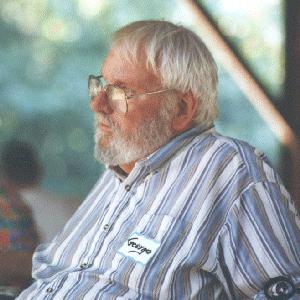 |
Mr. George Bragaw
1930-1997
Comes the dawn, its grey shroud too infirm to cover the sounds of life
but enough to allow a man his graceful return to nature. This is how I
shall always remember George Bragaw, a man at one with all manner of life,
with the grace to thrive among people and the wisdom to be at peace on the
land. In his final week, George asked me to write about him, to tell his
story in brief. But George was a mountain that sheltered so many
interests, so many people and so many stories that his story will be told
only when each of us have spoken. Thus I share with you what little I have
learned in my twenty years of friendship with him, recognizing that too
much will go untold.
|
Among all the things he was, George
Bragaw was a waterfowler. I see him as he places his decoys, as he sets up his
blind, as he quietly calls in his Labrador and as he settles into the patterns
of the day. George understood ducks and geese. He understood the wind and the
sun. He knew the pattern of life at the water’s edge and how man, too, had a
proper place there. Perhaps not well known, the Governor of Maryland appointed
George to serve on his Commission on the Canada Goose. The Governor had good
reasons.
A government depends on those of its citizens with wisdom, knowledge and
experience. George had a full measure of each. He was an articulate man, with
baccalaureate and masters degrees in English. He spoke in measured tones,
carefully selecting those words that fully and completely embraced his message.
Communication was one of his crafts, well learned and hard earned. George plied
his craft for three decades as a federal public servant, working with people at
every level of government. In a city that revels in petty political discourse,
George learned to take the long view, see the sweep of history at play and
support those whose actions would foster a better nation.
| Perhaps it was his governmental experience, perhaps the influence
of his family, or perhaps it was some innate wisdom – from whatever the
source, George understood people. He honored the nature of an individual,
the person’s strengths and weaknesses, and would not demean a person with
weaknesses because he refused to demean a person with strengths. He knew
how to work with people so that strengths combined, leaving weaknesses in
shadow. Perhaps he learned this skill not from people but from his
inordinate success with the Labrador.
In terms of pedigree, George came down from the two most influential
Americans in Labrador retrievers, Mrs. Helen Warwick (Lockerbie) and Mrs.
Joan Redmond Read (Chidley). These two recognized the challenge of
preserving the original Labrador in the United States, and worked
assiduously on the breed’s behalf. They had no better successor than
George Bragaw and his Shookstown kennels. |
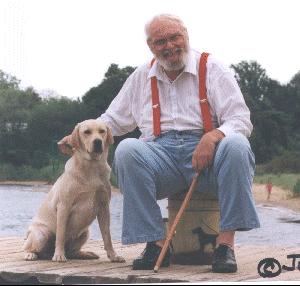 |
Among his earliest successes was Shookstown
Inka, sired by Ch. Lockerbie Sandylands Tarquin out of a bottom line that went
back to English Field Champion Glenhead Zuider. This breeding reflected an early
attempt to bring the field and bench lines together. In these early years, he
trained and ran his dogs in field trials with modest success, considering he had
to compete in a venue that had already been captured by professionals. In time,
George recognized that the Labrador in America had already split into two
irreconcilable camps and in essence into two distinct genetic lines, what he
called the American Field Trial Retriever and the original breed, the Labrador.
With this in mind, his breeding program reflected his commitment to the original
Labrador.
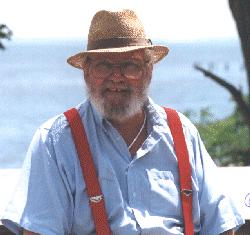 |
Most influential in Labrador’s were two Shookstown champions,
Lucifer and Solo Smasher. Lucifer stood behind Springfield Jeeves and
Springfield Camomile, two early elements of Mrs. R.V. Clark’s preeminent
Virginia kennel. Lucifer brought forward the Sandylands Tarquin strengths
of substance, balance and particularly, breed type.
Solo Smasher, long a fixture at the knee of his owner Stephen Graham
(with Betty, Graemoor Kennels) this black dog had what many believed to be
the ideal Labrador expression. Although rarely one to fail with words,
George described the proper Labrador expression as “once seen it cannot be
forgotten.” On another occasion, when pressed for definition of the proper
male head, he said “Go look at Solo Smasher.” He was not alone in lauding
this dog. Helen Warwick proclaimed that Smasher would “turn out to be more
influential than most of us realize.”
|
Breeders who built their kennels on Solo Smasher
remain influential in Labradors today. In addition to Graemoor, a partial
listing includes Jane Babbitt (Norfield-CA); Sally Bell (Borador-OH); Bob &
Judy Kay (Prospect-ME); Luanne & Dick Lindsey (‘Appylands-TX); Judy Race
(Devon-VA) and Linda Oldham (Barbaree-NY). Lucifer and Solo Smasher have long
since left the scene. But as Helen predicted, their influence remains with us
today in sparkling young dogs like Spednic’s Murphy that has tripled up on
Lucifer and Smasher.
George always considered Shookstown Gimlet Cinders his favorite, but perhaps
the most important dog he bred was Gimlet out of Sandylands Midas and Shookstown
Rivermist Hathir. Gimlet produced both Cinders and Solo Smasher, and through
them establishing “working drive” as a hallmark of the Shookstown line.
| The natural intersection of dogs and people is the dog club.
Twenty-five years ago, recognizing the unmet needs of local fanciers,
George convened a small group and founded the Labrador Retriever Club of
the Potomac. Considered the most prestigious Labrador specialty show on
the continent, the LRCP spring show has routinely ranked as one of the
nation’s ten largest specialty shows offered by any breed. Using the show
as a test bed, George promoted a variety of advances through the Potomac
specialty, including splitting classes by color and implementation of
hunting retriever and field trial classes. He fostered a complete club
that offered obedience, tracking, working certificates, hunting tests and
conformation shows. With his active support, the LRCP dedicated itself to
supporting research on genetic diseases in the Labrador and to supporting
the highly successful LRCP Lab Rescue, a separate organization whose
generosity and commitment to the unwanted Labrador reflects George’s own
values. So too, when the Labrador community recognized the need for a new
national organization, they tapped George as Chairman of the Board of the
Labrador Retriever Club of the United States (LRCUS).
|
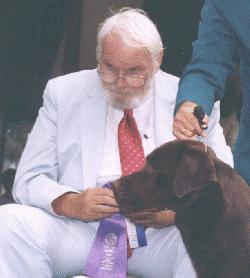
Photo by Tatham |
For the last three
years, and as a mark of his continuing leadership, the LRCP returned George to
its Presidency. As a result of his skill at combining the talents of strong
individuals toward valuable goals, his leadership lead to a “Bare Bones” fall
specialty that, in only two years, already ranks as a marquis event on the
Labrador calendar, and which brings the LRCP back to its self-sufficient roots.
An AKC licensed judge for Best in Show, the Sporting and Herding groups,
and various other breeds, with assignments at Westminster, the Labrador national
specialty, the Canadian national specialty, and at other important international
venues, George became a resource throughout the world, but especially in the
United States. He strongly supported all-breed venues, including his favorite
Rock Creek Kennel Club, of which he was a member, and the North American Hunting
Retriever Association, of which he was a member and strong supporter.
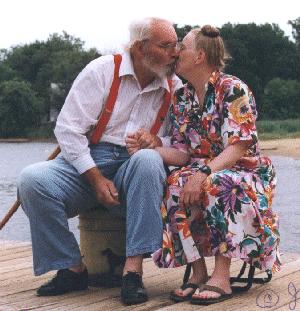 |
In the final years, one predominant issue captured his full
attention - the "battle against the new American Labrador standard." As a
man so well versed in the use of the English language, George was
profoundly upset at the new standard, its inaccuracies and ambiguities. In
the simplest, yet most fundamental terms he stated repeatedly, "The
standard does not describe the Labrador." At his end, he gave most of his
energy in opposition to this standard, working closely with the Labrador
Defense Fund, and wanted others to do so as well.
|
George said that his only goal in Labradors
was to earn the respect of Joan Read. That he has done and in so doing has
earned the respect and gratitude of our entire community. I suspect that what
Helen Warwick said about his dog may more appropriately reflect him – he will
turn out to be more influential than most of us realize.
His gentle spirit and kind manner, his eloquence, his vision, his commitment
and his professionalism, his leadership and his friendship – the Labrador world
has lost one of its finest and most faithful friends. His spirit will long lie
over this land, and give personal meaning to Robert Louis Stevenson’s sweet
refrain: “Here he lies where he longed to be; Home is the sailor, home from the
sea; And the hunter home from the hill.” Goodbye George. May God bless you.
© 1997 by David Schnare
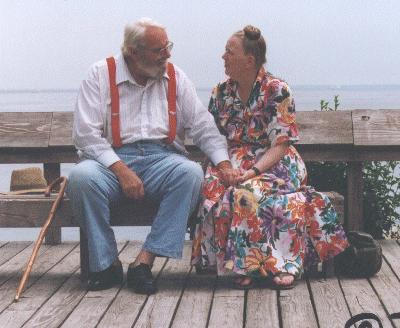
Photos By Price Jessup





